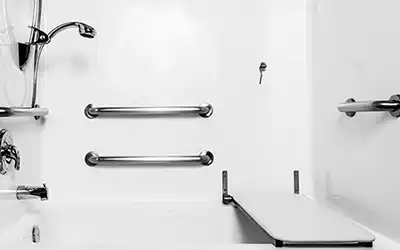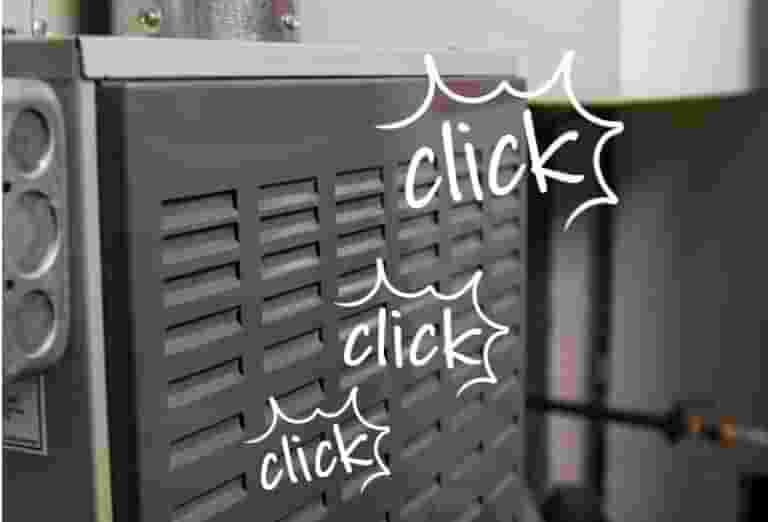Mr. Handyman has been helping homeowners repair, maintain, and enhance their spaces for over 25 years! We are the one-stop solution for everything on your to-do list. This includes answering your questions about home repairs, maintenance, and improvements. Here are answers to some of your most frequently asked questions about kitchen backsplash inspiration.
What are the most popular materials for kitchen backsplashes?
While the finished look may be the priority with most kitchen backsplash ideas, it's still necessary to consider installation difficulty, durability, ease of maintenance, and cost. Fortunately, the most popular materials for kitchen backsplashes typically cover all the bases.
Porcelain or Ceramic Tile
Using ceramic and porcelain tile is one of the most popular kitchen backsplash design ideas due to its aesthetics, affordability, durability, and easy cleanup.
Countertop Material
One of the newest and popular trends in kitchen design is using the countertop material to create the backsplash. You can choose this option with prefab and custom countertops for a seamless transition from the countertop to the backsplash.
Glass Tile
Glass tiles are popular for their elegance and style but also their durability and low maintenance. Plus, glass tile reflects light to brighten up your kitchen.
Natural Stone
Natural stone is a favorite backsplash material that is durable and beautiful and features smooth and textured finishes for a custom fit. White marble, for example, adds a touch of elegance, while limestone provides an organic feel.
What are the benefits of using tile for a kitchen backsplash?
Tile is the material of choice for many kitchen backsplash ideas because the material is ideal for traditional or modern decor. A tile backsplash updates your kitchen, lets you get creative, and guards your walls beautifully. Plus, a tile backsplash can last for decades and still look new with adequate cleaning and maintenance. Here's why tile may be the best material for a kitchen backsplash.
Home Value
The kitchen is one of the key selling points of a home, and a tile backsplash is a feature that is attractive to most buyers. A modern backsplash built with subway tile, for example, lets home buyers know you keep your home updated.
Selection
Tiles come in many shapes, patterns, and colors, so it's easy to match your current decor or create a new one. You can choose from matte, glossy, glazed, mosaic, textured, and many other finishes to create the perfect look.
Protection
Tile does more than look beautiful—it protects your kitchen walls. A tile backsplash guards against moisture, splatters, spills, and greasy buildup that would have ended up on your walls.
How do I clean and maintain my kitchen backsplash?
When browsing kitchen backsplash ideas, easy maintenance should be a priority. To keep your backsplash in top shape, clean it every few days. For a backsplash behind your stovetop, wipe it down every time you cook something. Liquid dish soap and water are ideal for routine cleaning and can be used on most types of backsplash materials. However, different materials require specific cleaning methods.
Ceramic or Porcelain Tile
A smooth porcelain or ceramic tile backsplash is easy to clean using soap and water and a soft nylon scrubber. Use an all-purpose cleaner as needed for stains and stubborn grime.
Glass Tile
Because glass tile is susceptible to scratches, non-abrasive cleaners and cleaning tools are a must. Use glass cleaner and paper towels for routine cleaning. Soapy water and a sponge is good for deep cleaning.
Natural Stone
While natural stone is durable, it can't withstand abrasive cleaners and harsh chemicals. Use a soft-bristled scrubber and soapy water for everyday cleaning, and add rubbing alcohol to the soap and water for tough buildup.
What’s the difference between ceramic and porcelain tiles for backsplashes?
Ceramic and porcelain tiles are excellent kitchen tile backsplash ideas. Both are beautiful and resistant to stains, scratches, and moisture, but there are differences to consider for the perfect fit.
Tile Durability
Porcelain tiles are usually more durable, heat resistant, and longer lasting than ceramic tiles because of the greater density of the material.
Material Cost
Porcelain tiles are typically more expensive than ceramic tiles due to the higher quality clay and methods used to make porcelain tiles.
Finished Look
Ceramic tiles are available in more finishes, colors, shapes, and sizes than porcelain tiles. Still, porcelain provides a more uniform and polished look.
Backsplash Installation
Both types of backsplash tiles are installed similarly, but porcelain tiles are more challenging to cut smoothly.
Are glass tile backsplashes durable?
Many modern kitchen backsplash ideas feature glass tile for several reasons. Glass tile backsplashes are popular because of their clean, contemporary appearance and durability. Glass tiles can handle daily wear and tear as well as most other backsplash materials, and they're easy to keep clean. A glass backsplash is impervious to moisture, fire-resistant, and won't fade or discolor. Plus, many glass tiles are made of recycled materials, and they don't require as much energy to produce as conventional tiles.
 Click to call
Click to call


 Click to call
Click to call
